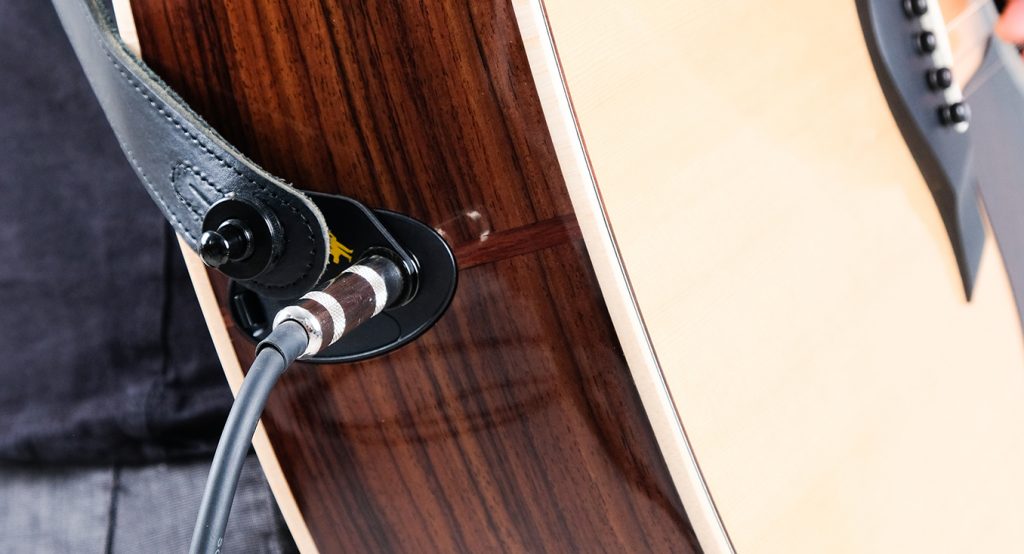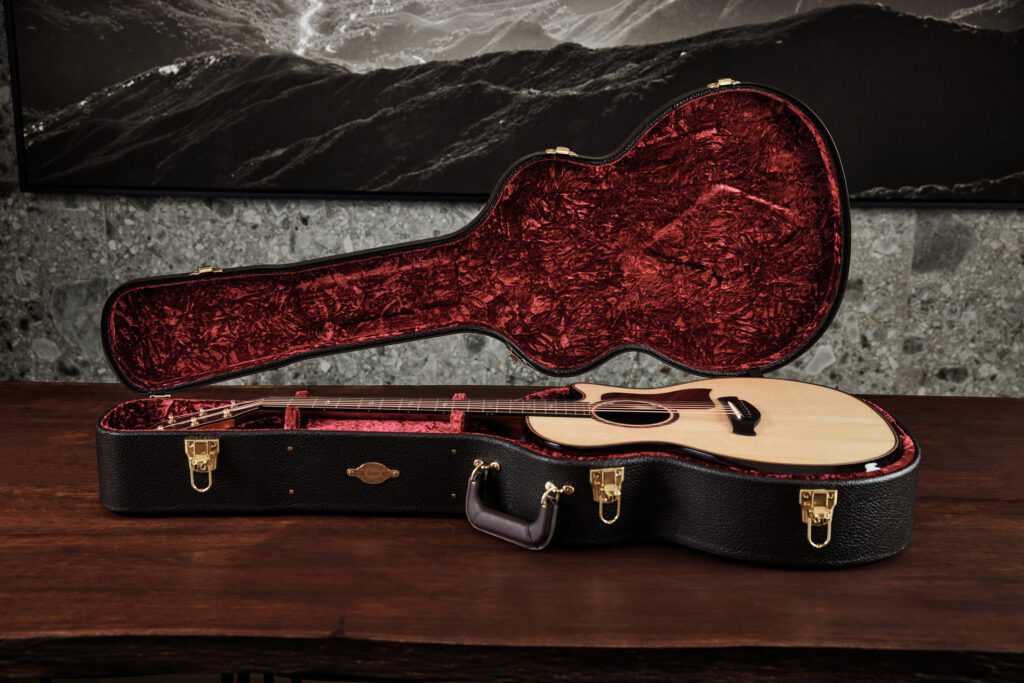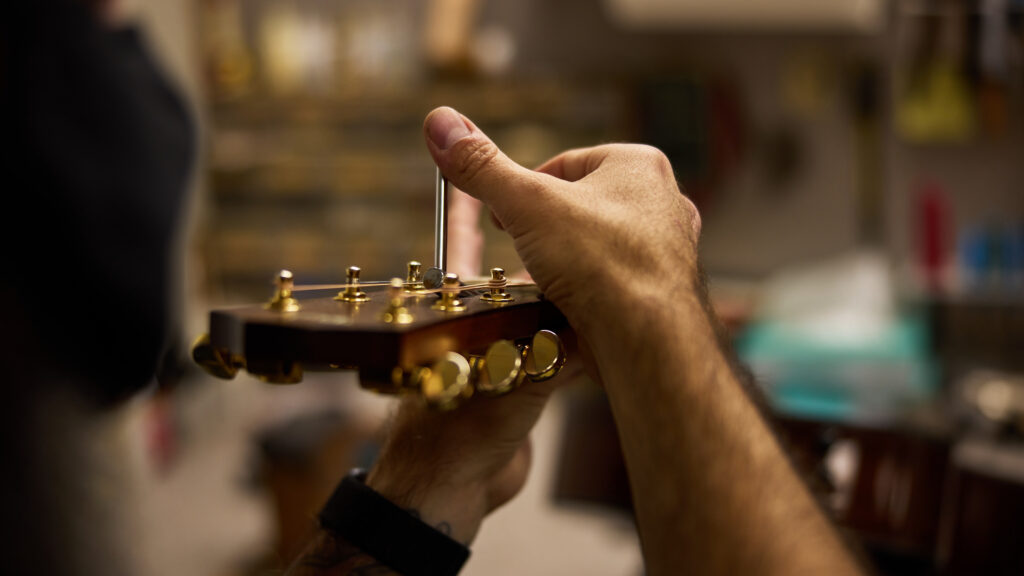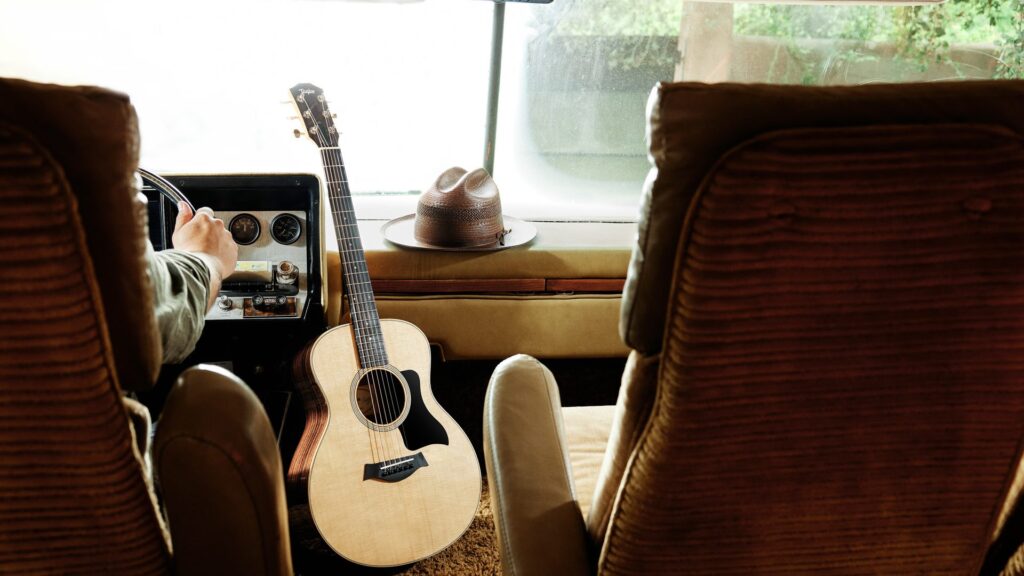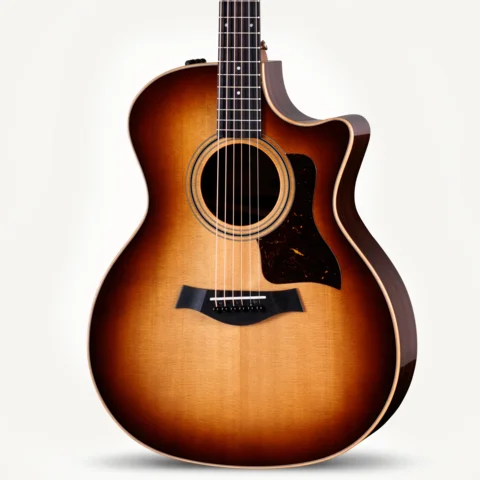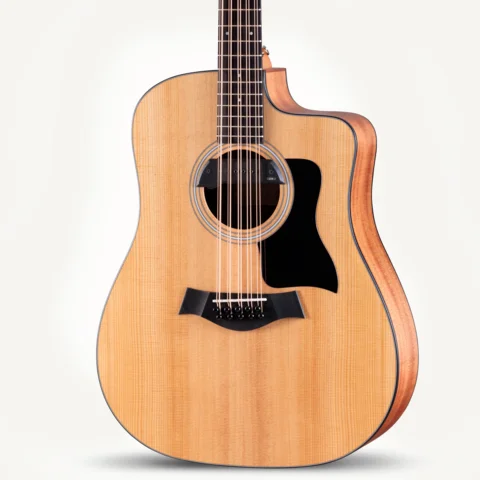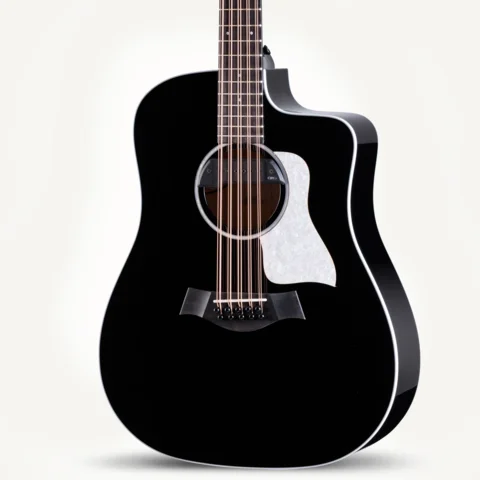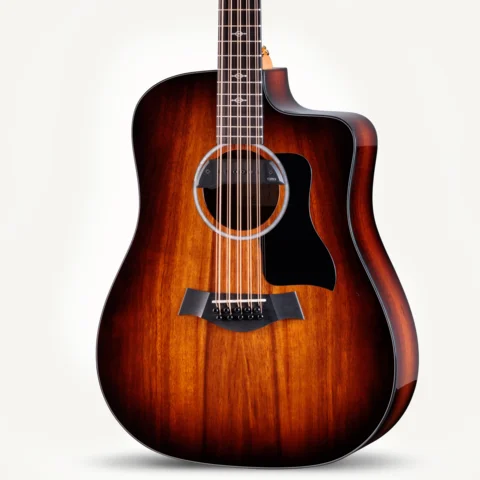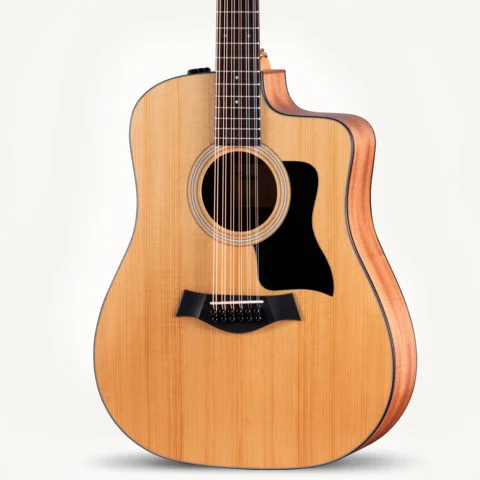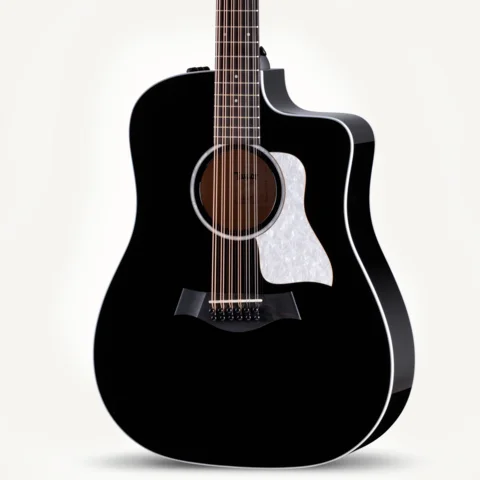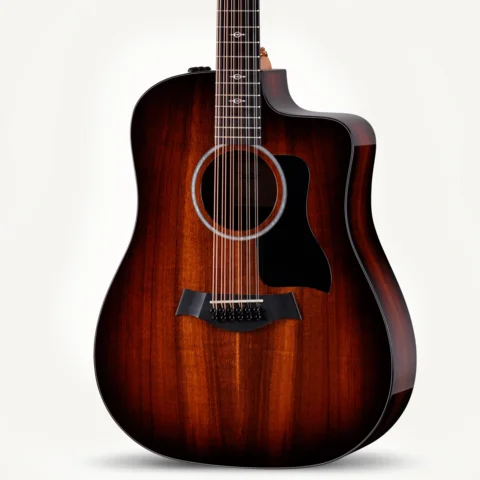Want to keep your Taylor from hitting the deck while gigging? Consider strap locks and a new adapter designed for Taylor guitars.
Playing guitar has been a passion of mine since I picked up my first one at age 12. A few years after that, I emptied my bank account — money saved from years of cash-stuffed birthday cards, lawn mowing and driveway shoveling — and bought a BC Rich guitar with a Marshall amp. Hey, it was the ’80s.
I waited four months for that guitar to be built and delivered to my not-so-local music store. I remember the salesman, Randy, a long-haired ’70s rocker who owned a BC Rich himself, going over the guitar with me. We reviewed all the knobs and switches and how to install the tremolo arm.
“Here’s your case key,” he said. “And these are your strap locks.”
“What?” I said. “What are strap locks?”
“Dude, these are cool. Hook these metal pieces to your strap, and they snap into the strap pins on your guitar. There’s no way it’ll accidentally slip off and hit the ground.”
“They ARE cool!” I replied, and I’ve installed strap locks on every electric guitar I’ve purchased since then.
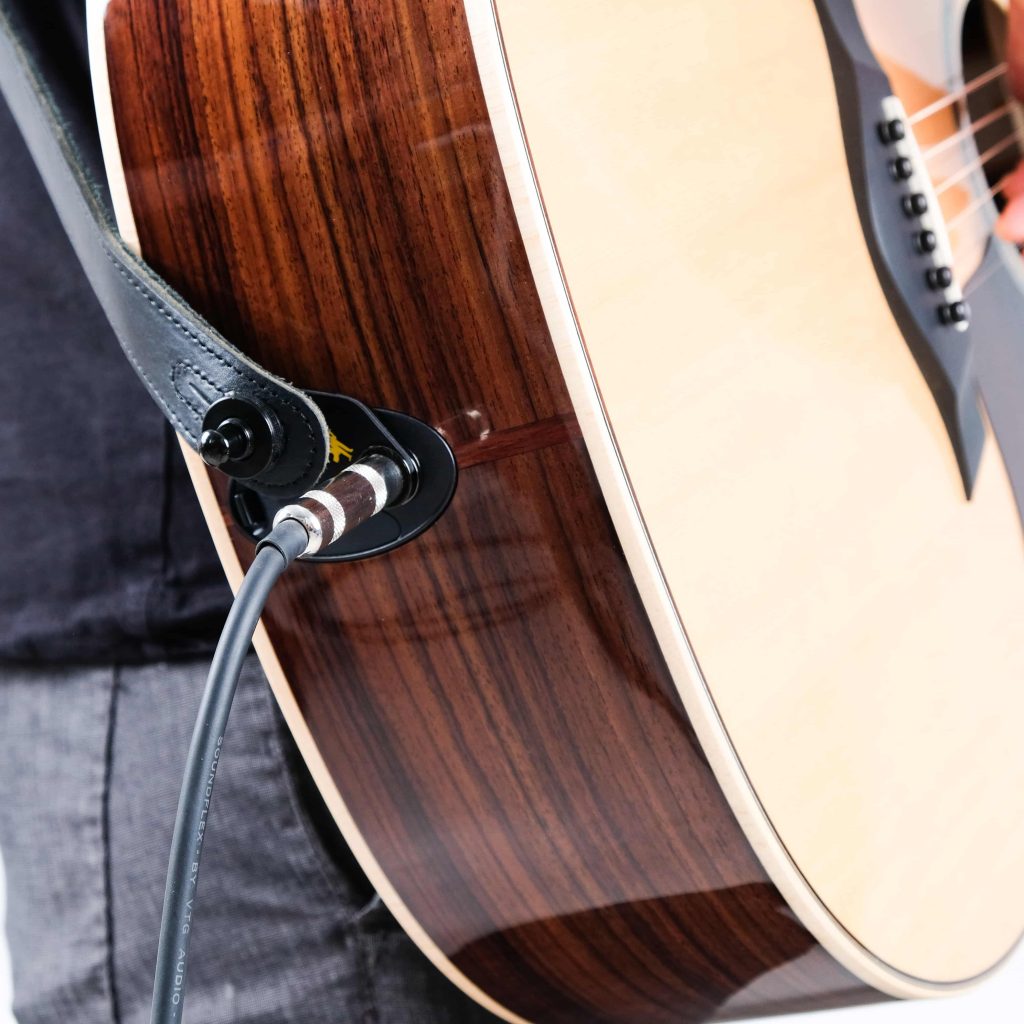
On electric guitars, it’s easy. You unscrew the strap pins on the body and replace them with the pins from your strap lock kit. It’s a super simple safety device that’s well worth the money. However, try adding strap locks to an acoustic guitar and you’ll quickly discover some complications. Most acoustics have a strap pin on the heel of the neck or on the upper bout of the body. These can easily be replaced, same as on an electric guitar. The problem arises at the tail end of the guitar, where many acoustics have a combination strap pin/output jack. There is no basic strap pin held in place with a screw that you can simply replace. So, what do you do?
I’ve seen a lot of players stop there. They have a strap lock on one end of their strap and continue hooking the other end over the output jack because they’re not sure what to do with that end. One secure end is better than nothing, right?
You have two options if you want to use strap locks on both ends of your acoustic guitar. Option one is to drill a hole in your guitar to install the strap lock button. It’s safe, secure and solves the problem. If your guitar is a workhorse, tool-of-the-trade gigging machine built for road play, you might not have a problem with this. The tail block is a solid chunk of wood at the tail end of your Taylor acoustic guitar. It’s about 2-¾ inches wide and spans the entire distance from top to back. If you’re drilling a hole for a strap pin, you want to hit this block so the screw can securely anchor the strap pin. Drilling into an area that is not reinforced would be disastrous, so I suggest having an experienced tech do this for you.
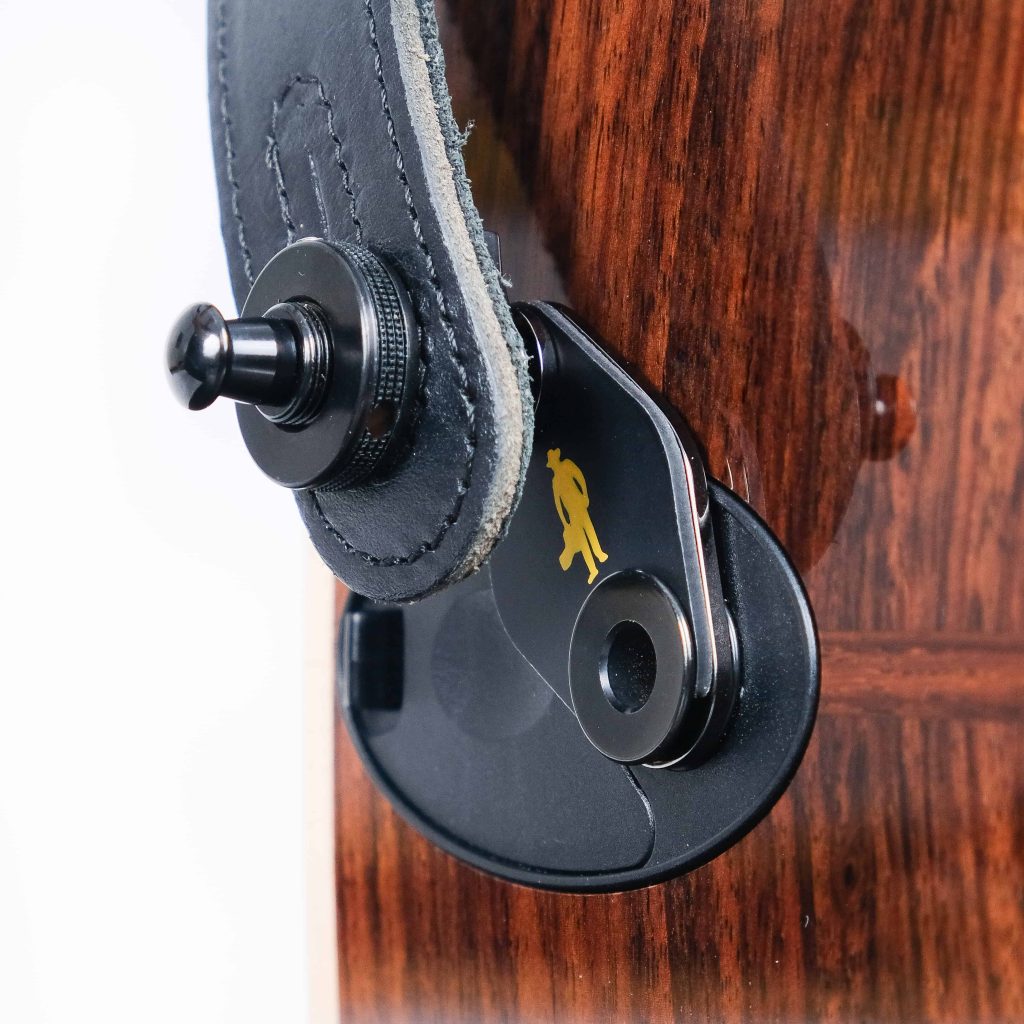
The other option, which was made available in 2019, comes from a company called MusicNomad. Those of you who cringe at the idea of drilling a hole in the tail end of your cherished Taylor guitar will really like this. They recently introduced strap lock adapters called Acousti-Loks, which connect to your output jack with an offset strap lock button attached so you can use strap locks without drilling holes. It requires no permanent modifications to the guitar, and the adapter can be removed at any time. If your Taylor has a 9v-battery-powered Expression System® pickup, they’ve got you covered. (Part #MN272)
Taylor guitars with a more traditional protruding output jack (usually pre-2003) will be able to use the MN270 Acousti-Lok for standard-thread jacks used on Fishman electronics (On-Board Blender, Prefix, Matrix, etc.) or the MN271 Acousti-Lok for the metric-thread jacks used on LR Baggs pickup systems.
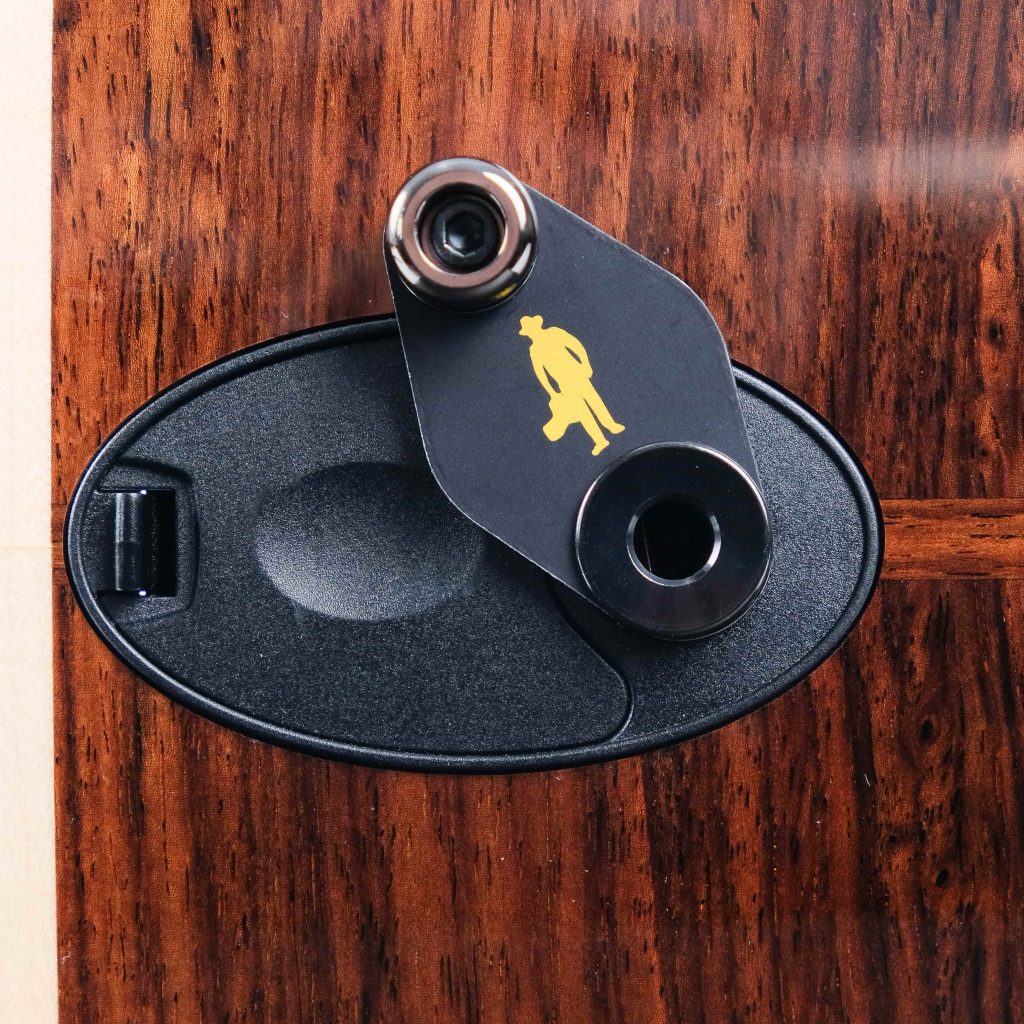
I’ve heard from some players who use the same style strap locks on all their guitars and straps, which allows them to use any of their straps on any of their guitars. That’s a pretty handy trick, especially if your gig requires juggling multiple instruments. No longer do you need a dedicated strap with one hole enlarged to slip over the jack cap on your acoustic. Grab any strap or guitar you need!
Acousti-Loks come equipped with a Schaller-style strap lock pin, but if you prefer another style, such as Dunlop’s Straplok Strap Retainers, you can easily swap out the pin of your choice.
That’s the story on strap locks. Whichever approach you choose, you can trust your guitar strap to keep your Taylor guitar safe.
Glen Wolff is Taylor’s Customer Service Manager. Have questions? Email us.

























